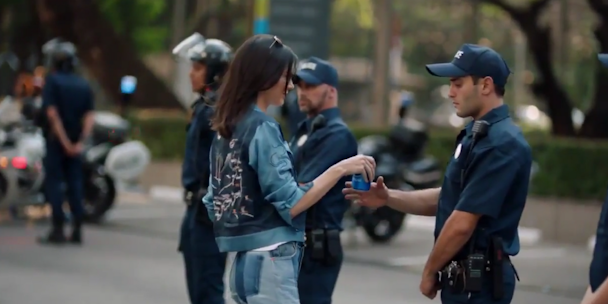Why brands shouldn’t fake woke-ness
One of the trickiest things about working in branding is that a surprisingly significant proportion of people naturally assume you are a wanker.

For a select few, even the word ‘brand’ can imply style over substance, medium over message and, worst of all, profit before principles.
The reality is a far less binary and much more messy affair. From my experience, the vast majority of people working within and for brands are thoughtful types with a social conscience.
Optimism and striving to bring out the good in people are the seeds from which true creativity bloom. Creative people nearly always want the world to be a more beautiful, more organised, more intelligent, and more fun place.
Our recent report spoke to creative thinkers across the globe and backs up the idea that more than ever, being 'good' is good for business. So, should all brands have a moral compass that directs what they say and do out in the world?
Well, it is ok just to sell stuff. Every piece of brand communication can’t, and shouldn't, be a treatise on the human condition. Take the Trivago ads, which you’ll have seen if you’ve been anywhere near a London tube station lately. To my eye, they’re emotionless – almost as if they were designed by automaton. For an organisation selling fun in the sun, it's a bland approach – the creative equivalent of a Captain Caveman’s club. That said, it’s not claiming to be otherwise, and the call to action’s clear as day.
Brands like Trivago aren’t the problem. The ones co-opting morals – the ‘fake woke’ – are more duplicitous. They say they mean well, but they’re emotionally bankrupt. They’re trying to make a profit from millennial liberals (a proportion of the 66% who’ll pay more for products from sustainable brands), but it doesn’t actually work. The bullshit detector of your average 20-year-old is strong and they have the platform to deal a multinational a blow with a swipe of a finger. Just ask Kendall and PepsiCo.
Genuine activism is a powerful way to engage people. It goes beyond the rational, surpasses the sentimental, and goes straight for the soul. By taking an activist standpoint, a brand isn't just saying to you: 'like me', it's saying: 'I'm like you'. It’s a bold position that opens a brand up to challenge and scrutiny.
Jigsaw’s recent campaign is a striking example. It set out an articulate perspective on the complex issue of immigration and Britishness. It was fresh, particularly in an industry that likes to airbrush contentious debates (body dysmorphia and questionable supply chains to name a couple), and should be heralded as a truly human response. Its restraint makes it a noble gesture, not a marketing meme.
This comes down to conviction, integrity, and deep-rooted change that goes beyond hype. Patagonia’s the poster child in this space because it backs claims with action. Its values are in baked into the DNA of the business model, and when they shut up shop to get people out voting, it resonates.
Unilever’s another example. It’s making an impressive investment not just in communicating a message of sustainability, but in making a tangible impact on the communities it works within by partnering with NGOs. And Kenco’s whole marketing approach was turned on its head with the 'Coffee v Gangs' work, which garnered great response and flipped category norms.
All of this takes on extra relevance as we race to the season of goodwill. There’s the temptation for brands to go full steam ahead, using marketing budgets to promote their commitment to a social cause. There’s nothing wrong with that as long as you really mean it. (The natural fit of Adam&Eve/DDB’s Man on the Moon campaign alongside Age UK is an elegant reference.)
This tumultuous year could hint at 2017 being the advent of activism. If so let’s remember you can cover an idea in tinsel and cinnamon, but if you don’t put your money where your mouth is, the truth will out.
Chris Moody is chief design officer at Wolff Olins
